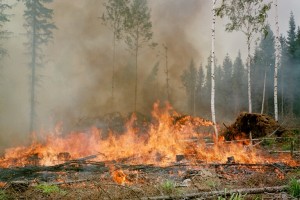In today’s world, the main threat to the survival of wild orangutan populations is the massive expansion of palm oil plantations in Borneo and Sumatra.
What is palm oil?
Palm oil is obtained from the fruit of the oil palm tree, and it is the most commonly used vegetable oil in the world. In Indonesia, palm oil has replaced coconut oil as the main cooking oil, just as it has replaced peanut oil in Myanmar. Also, palm oil can be found in 50% of all consumer goods, ranging from personal care products, household care products, processed food, and even in biofuels.
Fun fact: Have you ever wondered what is the ingredient allows your cosmetic products and toiletries attain their creamy consistency? It is palm oil!
Why is there a rapid increase in palm oil plantations?
Surging global demands for palm oil has fuelled extensive rainforest destruction to make way for palm oil plantations throughout Indonesia and Malaysia. Together, these countries account for 85% of the world’s palm oil production. In just the U.S. alone, demands for palm oil has tripled in the last 5 years.
This is further exacerbated by the benefits that the palm oil industry brings to the Indonesian economy. The palm oil is a huge industry, accounting for 11% of Indonesia’s export earnings and is the most valuable agricultural export. Overall, it is also Indonesia’s third largest export earner. With a rapidly growing population placing economic pressures on the Indonesia, the increase in sale of palm oil would help to improve its economy.
How does this affect the orangutans?
To accommodate the rapid expansion of palm oil plantations, massive areas of rainforests which are home to the orangutans are clear cut to open up land for cultivation. In Sumatra, a minimum of 10.8 million hectares have been converted into palm oil plantations.
Often, farmers and plantation developers deliberately and illegally engage the use of the slash-and-burn technique to clear the land to make way for these plantations. Not only do fires destroy expansive areas of the orangutan habitat, thousands of these slow-moving orangutans are unable to escape the flames and are burned to death. Orangutans who managed to flee the flames are frequently killed brutally by villagers for meat or as agricultural pests.
For the luckiest orangutans that survived the ordeal, they are taken in by rescue centres and are released back into the wild when possible. In 2006, a minimum of 120 rescued Bornean orangutans were suffering from dehydration, smoke inhalation or wounds inflicted by villagers.
Sadly, even protected areas such as national parks are not immune from fire. As the number of plantations increase adjacent to and even within national parks, so do the numbers of wildfires. Between 2002 and 2004, more than 50% of all recorded burnt area was in conservation forest.




